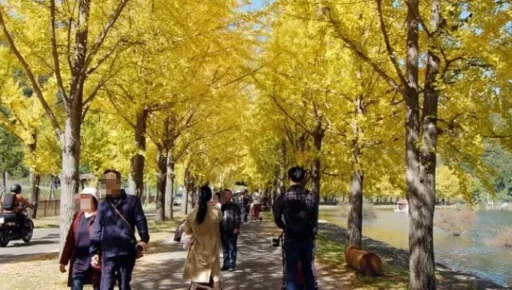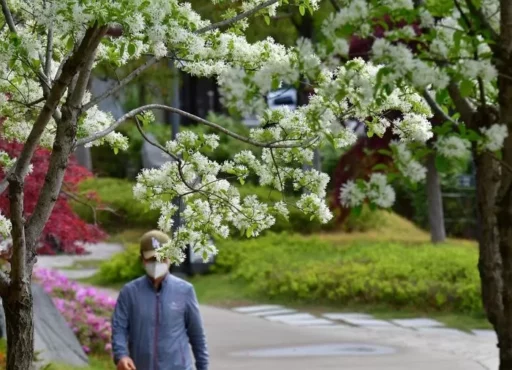Decrease in Odor Complaints and Emphasis on Aesthetic Appeal… 45% Increase in Paulownia Trees in 5 Years
Over the past five years, the landscape of street trees in Seoul has changed significantly. The ginkgo tree, once a representative street tree known for its autumn foliage and resistance to pests, has seen a decline due to citizen complaints. In contrast, the Paulownia tree has experienced a surge in numbers thanks to its aesthetic appeal and environmental adaptability.
According to the 'Status Statistics of Seoul's Street Trees' from the Seoul Open Data Plaza, as of 2023, there are 294,668 street trees in Seoul, of which 25,613 are Paulownia trees.

This represents an approximate 45% increase compared to five years ago (17,639 trees). By district, Songpa-gu has the largest number with 3,011 trees, followed by Gangseo-gu (1,872 trees), Yeongdeungpo-gu (1,450 trees), Guro-gu (1,398 trees), and Seongdong-gu (1,361 trees).
SNS Reactions to Flowers Resembling 'White Rice'
In May, during the bloom period, the Paulownia tree becomes entirely covered in white flowers, giving rise to its old name 'Rice Tree' (이밥나무), which was later changed to Paulownia. When the petals scatter in the wind, they create a scene reminiscent of falling snow. The risk of pollen allergies is also relatively low, as the stamens are enclosed within the corolla, minimizing the possibility of pollen dispersal.
The tree is not only appreciated for its aesthetic appeal but also for its resilience against pests and pollution, which contributes to its popularity as a street tree. On Instagram, the hashtag '#Paulownia' has surpassed 46,000 posts as of the 8th. Interest in Paulownia tree locations such as the Paulownia Tree Path at the National Cemetery of Seoul, Jeonju, Daegu Dalseong-gun, and Jincheon's Chungbuk region has been rising in line with its blooming season.

Decline in Ginkgo and Hackberry Trees… Vulnerability to Natural Disasters Considered
On the other hand, ginkgo and hackberry trees have shown a downward trend. Compared to five years ago, ginkgo trees have decreased by approximately 7%, and hackberry trees have decreased by 25.6%. While ginkgo trees showcase stunning autumn foliage and are resistant to pests and pollution, the distinct odor from their fruit has led to a surge in complaints every autumn, prompting ongoing replacement requests.
Hackberry trees, alongside horse chestnuts and linden trees, are recognized as one of the world's top three street trees due to their rapid growth and resistance to pollution. However, the knowledge that they are more susceptible to breaking or toppling during natural disasters like typhoons has led to a recent trend of replacing them with other species.

Gangnam District Hosts Most Street Trees… Relatively Few in Northern Areas
Gangnam District has the highest number of street trees in Seoul, with 23,201 trees planted. This is followed by Songpa-gu (22,964 trees), Dongjak-gu (18,466 trees), Gangdong-gu (17,043 trees), and Seocho-gu (15,998 trees).
In contrast, Gangbuk-gu has the fewest at 6,028 trees, with Gwangjin-gu (6,215 trees), Geumcheon-gu (6,782 trees), and Seongdong-gu (6,976 trees) also showing relatively lower numbers of street trees.
Image Source: Reference photos for better understanding of the article / News1, News1.


